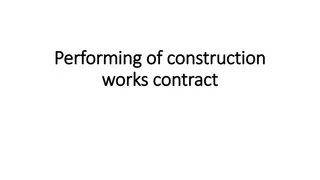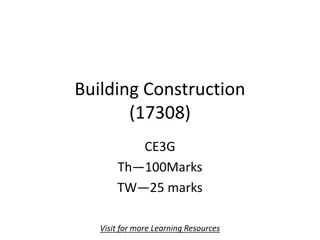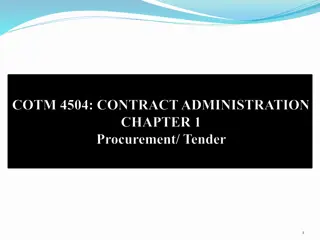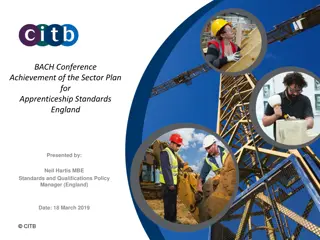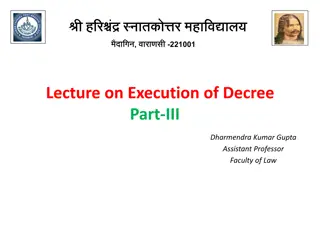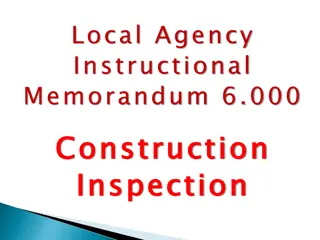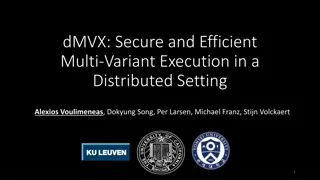Efficient Construction Practices for Successful Project Execution
Efficiently managing critical stages of construction, from site identification to masonry works, is crucial for project success. Key steps include site acquisition, material procurement, setting out structures, concrete work, and masonry works. Each stage requires careful planning, adherence to specifications, quality control, and proper execution to ensure project timelines, budget adherence, and structural integrity. Embracing best practices such as correct positioning of modules, proper reinforcement, accurate concrete mixing, and precise masonry work is essential for a successful construction project.
Download Presentation

Please find below an Image/Link to download the presentation.
The content on the website is provided AS IS for your information and personal use only. It may not be sold, licensed, or shared on other websites without obtaining consent from the author. Download presentation by click this link. If you encounter any issues during the download, it is possible that the publisher has removed the file from their server.
E N D
Presentation Transcript
CONSTRUCTION OF A DTF CRITICAL STAGES
STAGES OF CONSTRUCTION 1. Site identification, acquisition and securing 2. Procurement of material and equipment 3. Setting out of structures 4. Construction 5. Testing of works 6. Commissioning
1. Site identification, acquisition, securing Appropriate slopes/gradient and dimensions Legal documents Fence to restrict access 2. Procurement of materials and equipment Construction material of right quality Proper equipment for construction Appropriate storage of material
3. Setting out of structures Site clearance Correct position of modules (dimension and level) 4. Construction a. Excavation for foundation Correct dimension and level (avoid over-excavation) Free from water (at least 4 hours after concrete is placed)
b. Formwork Respected minimum period before removal Cleaned and dressed with clear oil before fixing Tight joints Holes and spaces tightly sealed
c. Reinforcement Reinforcement bars (beams and columns): right size, length and shape (see bar bending schedule) BRC mesh (ground slab) : right spacing and size No movement during concrete placing Should not touch the formwork BRC Mesh A142 : spacing 200mm size 6 mm Y10 reinforcement bar: size
4. Concrete work Correct ratio of cement/sand/aggregate (volumetric boxes) Mix of concrete with clean water Slump test (cone) to be done at each mixing of concrete to test the correct amount of water Smooth transport to prevent adulteration, segregation and loss of ingredients Pouring to be done as close as possible to final position Curing process start 4h after concrete placing and last at least 7 consecutive days During the first 4h, exposed concrete surface is protected with impermeable sheeting Concrete class 25 (1 : 1.5 : 3)
5. Masonry works Walls need to be straight, square and plumb (basic tools: square and plumb bob) Walls should be plastered (with water proof additive) and painted where specified Hoop iron shall be fixed every other course of bricks All masonry work must be plumb and square
6. Flooring, doors, windows, ironmongery, roofing Doors and windows shall be procured in accordance to their sizes and type. All the doors and windows ironmongery including locks, stays, jambs and wall passes must be of the right quality. Roofing must be done using treated timber 5. Testing of works Each tank should be filled with water (drinking water or from a water body) for at least 48H
The reference water level should be measured after half a day to take into account the soaking effect of the wall The chambers of the ABR should be filled all together progressively to avoid putting pressure on the walls 6. Commissioning and Handing over Once all necessary repairs have been done and the facility is considered operational, the certificate of completion can be signed. The DTF can be handed over to the WSP and commissioned with septage or wastewater







